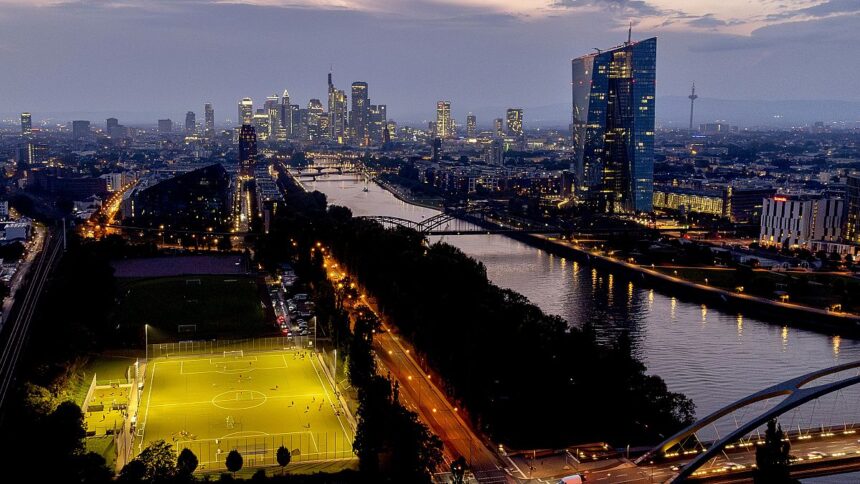The 25 basis point cut, expected by analysts, arrives against a backdrop of settling inflation and anaemic growth.
The European Central Bank (ECB) reduced its interest rates on Thursday afternoon during its October meeting, marking the third consecutive cut since June.
New interest rates have been set at 3.40% for main refinancing operations, 3.65% for the marginal lending facility, and 3.25% for the deposit facility.
The interest rate on main refinancing operations is the rate banks pay when they borrow money from the ECB for one week, while the marginal lending facility rate is the cost banks pay when they need to borrow money from the central bank overnight.
The deposit facility rate, meanwhile, is the interest rate banks receive when they deposit money with the ECB overnight.
“The Governing Council today decided to lower the three key ECB interest rates by 25 basis points. In particular, the decision to lower the deposit facility rate – the rate through which the Governing Council steers the monetary policy stance – is based on its updated assessment of the inflation outlook, the dynamics of underlying inflation and the strength of monetary policy transmission,” the ECB said in a statement.
“The incoming information on inflation shows that the disinflationary process is well on track. The inflation outlook is also affected by recent downside surprises in indicators of economic activity. Meanwhile, financing conditions remain restrictive,” it added.
Instead of the usual Frankfurt location, policymakers are this month gathered in Llubljana, Slovenia.
Falling inflation
The decision to lower borrowing costs comes as inflation dipped to a revised 1.7% in September in the eurozone, down from 2.2% in August.
The result marked the first time the total had fallen below the ECB’s 2% target for three years.
The decline was driven primarily by falling energy prices, although core inflation – excluding volatile energy and food prices – remained stickier at 2.7%, down slightly from 2.8%. Services inflation is also a stubborn outlier, running at 3.9% year-on-year.
Despite this, the headline rate of inflation is expected to hover around 2% for the rest of 2024, although it may slightly overshoot the target – according to economists.
“The latest developments strengthen our confidence that inflation will return to target in a timely manner,” Lagarde told a European Union parliamentary hearing in Brussels last month.
She added that the ECB would “take that into account” in October’s monetary policy meeting.
Tepid growth
Signs that the eurozone economy is stagnating also contributed to Thursday’s rate cut, with many hoping that reduced borrowing costs will now stimulate spending.
Growth came in at a sluggish 0.2% in the second quarter of 2024, revised downwards from a previous estimate of 0.3%.
“This was because of lower than expected private consumption growth and investment, as well as weaker inventories, despite a stronger than expected contribution from net trade,” said the ECB.
Predicted growth for the third quarter is at 0.2%, while the ECB expects the annual total at 0.8%, down from June’s 0.9% forecast.
Estimates for 2025 have been downgraded from 1.4% to 1.3%.
Looking at other indicators, the HCOB Eurozone Composite PMI slipped in September.
The PMI total, which is based on survey responses from players in the manufacturing and services sectors, dipped below the 50-point threshold – showing a contraction in private sector activity.
Germany, the eurozone’s biggest economy, is in particularly dire straits. Its economy is predicted to shrink by 0.2% in 2024, following a 0.3% contraction in 2023.
Thursday’s move from the ECB comes after the US’ Federal Reserve cut rates by 50 basis points last month, the first reduction since early 2020.










